 Headliner – Kopi the Bear
Headliner – Kopi the Bear
August 2021
Kopi the Bear is our most recent entry to Center Stage. This bear was developed by Juniper Design (Chris Davis) as part of the artwork for CBMskills. This software is being rolled out in August 2021 as part of a mastery monitoring of specific skills (modules) for students in Grades K-5. Presently, CBMskills Math (https://cbmskills.com) has nine specific modules for each grade with problems presented to students that require them to produce, not select, the answer. This type of specific skill orientation using production responses is relatively new in the world of testing, but it affords more diagnostic value for teachers.
Researchers at Behavioral Research and Teaching (BRT) are using this format to build cognitive diagnostic models for students so teachers can monitor specific skills sequence/development. Eventually, in Phase 2, we plan on integrating a computer-adaptive test within the site so that teachers can track their students’ mastery of specific skills and document their subsequent growth in math domains such as Geometry, Numbers and Operations, and Algebraic Relations. This information can be used in conjunction with the easyCBM screening and progress monitoring assessments to provide even more information for teachers monitoring the effectiveness of their instruction in a Response-To-Intervention model.
In Phase 3, we plan to build in a reading diagnostic model for students in Grades K-3. Again, using a production response, students will be presented phonological awareness tasks for isolating sounds, blending, and segmenting as well as a number of word reading tasks using sight words, various vowel sounds and complex vowel teams, consonant blends and digraphs, and tricky silent and controlled patterns. Response patterns will be used to provide teachers diagnostic information to help structure sufficient repeated opportunities to master the skills that undergird successful progress through the existing easyCBM literacy measures.
These measures represent a new generation of digital assessments where students can plug into the platform independently so teachers can focus on data interpretation and development of appropriate interventions. And, of course, Kopi the Bear shares his Center Stage with Aaron Glasgow, the Director of Technology at BRT and project lead for this work, and James Llewellyn, the analyst programmer who is responsible for developing the student assessment interactions and reporting systems.
 Headliner – Dr. Daniel Anderson
Headliner – Dr. Daniel Anderson
June 2018
Daniel Anderson, Research Assistant Professor at BRT, is leading a new set of data science courses through the University of Oregon’s College of Education. Building off the success of prior offerings, Daniel is now planning to offer a three-course sequence this year (during the fall, winter, and spring), which may be extended with two additional offerings during the fall and winter of the 2019-2020 school year. The course offerings heavily emphasize working with data programmatically, transparent and reproducible workflows, and visualizing and communicating data, all through the statistical computing environment R.
“I started learning R during my doctoral studies because it just kind of seemed like the thing to do”, Daniel says, “but it has completely changed my life – not just in the way I work with and think about data, but in terms of opening my eyes to an entirely different world I didn’t even know existed and providing me opportunities I never expected.”
A big part of the world Daniel had previously not interacted with, is the free and open source soft 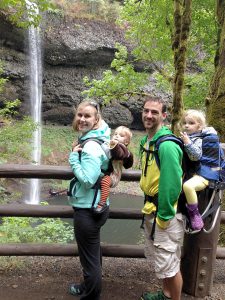 ware community, or FOSS. As a beginner, Daniel says these communities can often be intimidating, but he insists that the R community is different.
ware community, or FOSS. As a beginner, Daniel says these communities can often be intimidating, but he insists that the R community is different.
“Just go on twitter and be a lurker.” He suggests. “Search around using the #rstats hash tag and you’ll see a community that is absolutely committed to welcoming users at all levels, including absolute beginners.”
But the welcoming community also extends beyond just skill levels.
“One of the biggest problems in the tech community – of which R is a part – is the lack of diversity. But the R community is doing everything they can to combat this. There’s an organization call R-Ladies, for example, that has chapters all across the world. In large part because of this group, R meetups and conferences are generally much more gender-balanced than other areas in tech. They’re an incredibly important group and integral to the community.”
It’s part of this focus on inclusion and diversity that Daniel says makes him so passionate about R. As a former elementary school teacher, and a self-identified teacher-at-heart, Daniel says his excitement about R and the community naturally lead him to want to lead courses around the content. He is quick to point out, however, that the benefits of R go well beyond the supporting community. He is a strong proponent of FOSS generally, and fundamentally believes it can and should help shape the way science is conducted.
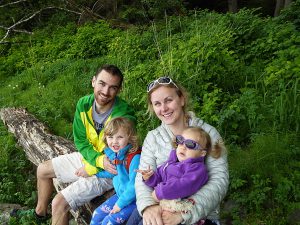 “Programming with R inherently makes your data analyses more transparent because you have a running record of all the steps you took for that analysis. If you’re operating within a FOSS framework, then theoretically anybody should be able to replicate your analysis if they have access to your data. That’s a fundamentally different way of thinking about a research paper – not as a presentation of some findings, but as a show-all that encourages active collaboration from others. R is helping make this a reality, and much more accessible, through tools developed by the community”.
“Programming with R inherently makes your data analyses more transparent because you have a running record of all the steps you took for that analysis. If you’re operating within a FOSS framework, then theoretically anybody should be able to replicate your analysis if they have access to your data. That’s a fundamentally different way of thinking about a research paper – not as a presentation of some findings, but as a show-all that encourages active collaboration from others. R is helping make this a reality, and much more accessible, through tools developed by the community”.
Daniel is part of that community developing tools. He recently developed a new R package called slidex, which he qualifies is a work in progress, but helps people convert Microsoft PowerPoint slides to an open-source (and beautiful) HTML format through basic R code (see the in-progress development here: https://github.com/datalorax/slidex). Yihui Xie, one of the most important people in the R Community, having developed multiple packages for weaving together code and text, said slidex is “the most creative and beautiful magic I have seen in the rstats world this year!”.
Daniel has an active blog, which can be found at http://www.datalorax.com, along with more information on his recent publications, presentations, and teaching.
To learn more about Daniel Anderson and his work and accomplishments, check out these other links:
Daniel Anderson Biography and Vita
Promotion to Research Assistant Professor
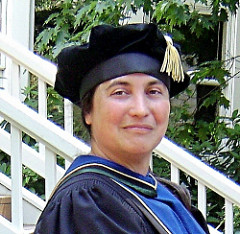 Headliner – Dr. Julie Alonzo
Headliner – Dr. Julie Alonzo
August 2016
With a $1.5 million research grant from the Institute of Education Sciences (IES) launching in August of 2016, Dr. Julie Alonzo, Co-Director of BRT, is excited about the future.
“The funding for Project DATA for RTI,” she explains, “came at the perfect time, exactly one decade after we received the initial funding that enabled us to develop the easyCBM system. The initial work, funded by the Office of Special Education Programs, gave us the seed money to work with a great team of K-5 educators to design the original system, including building the basic reports and functionality. Three additional grants from IES in the past ten years provided the opportunity to develop, refine, and expand the types of assessments the system provides as well as the grade levels it covers. Now, we are moving into the study of how best to support teachers in their use of the data, all with the goal of helping students succeed academically.”
“This new grant will enable us to test out different approaches to providing professional development to teachers to help them harness the power of RTI data. One of our basic premises is that the key to helping students meet academic expectations is to ensure that they are being taught in a way that meets their needs. Teachers need to be able to track the impact of their instruction, making adjustments in curriculum, strategies, grouping, and intensity as needed until they reach that ‘ah-ha moment’ when it all starts falling into place. Project Data for RTI gives us four years in which to develop and validate not only the content of professional development units, but also the way it is delivered to teachers, all with the goal supporting teachers in their daily work.”
Dr. Alonzo has been intimately involved with the easyCBM project since its earliest conception. “The idea for the original proposal came from JT [Dr. Gerald Tindal, Director of BRT], based on his experiences with CBMs and his own graduate student days at the University of Minnesota, and when we received funding to become one of three Model Demonstration Centers for Response to Intervention in the nation, I couldn’t wait to get started. I was a doctoral student at the time, and the project gave me the opportunity to integrate my previous work experience as a high school teacher and sometimes administrator with my Ph.D. coursework in statistics, measurement, and assessment.”
“That first year of funding for easyCBM was both exciting and exhausting. We received funding in January and needed to have the system fully functional by September. To achieve that goal, Dr. Alonzo and her research team spent countless evenings and weekends brainstorming and then developing the basic web-based interface, writing and reviewing assessment items, organizing field testing and item piloting, analyzing data, and then creating the multiple alternate forms of the K-5 literacy assessments. We started off with seven types of measures: Letter Names Fluency, Letter Sounds Fluency, Phoneme Segmenting, Word Reading Fluency, Sentence Reading Fluency, Passage Reading Fluency, and Multiple Choice Reading Comprehension. After we analyzed the data, we decided to drop the Sentence Reading Fluency measure but keep all the others. Although it required many late nights that first summer, we somehow managed to get it all done by our September deadline.”
Of course, it didn’t take long for people to request expansion of the system. “By the time we had the K-5 reading measures finished, we were already fielding requests for math measures, and for measures that could be used with older students,” Dr. Alonzo explains. Subsequent IES grants enabled BRT to meet these requests, and adoption of easyCBM continued at a remarkable pace.
“Within a few years, it became clear that demand for the system was not slowing down. We began to branch the code so that it could better meet the different demands being placed on it. We kept our original design (the easyCBM Lite Edition) available free of charge for individual teacher use, and also began offering a District version with additional features that were designed specifically to help with district-wide adoption. We continued to add new features, such as Spanish language supports, both written and audio, for all mathematics items, new assessment types (such as vocabulary, Common Core State Standards aligned reading and mathematics tests, and Spanish language literacy), working with HMH-Riverside Publishing to distribute the District version. In fall of 2015, we added the ability for teachers to purchase a new subscription-based Teacher Deluxe version that includes all of the new assessment types and enhanced features found in the District version but is specifically designed for individual teachers rather than systems-wide adoption.”
“It’s really rewarding to work on a project that is making a positive difference in the lives of students and teachers,” she continues. Not surprisingly, Dr. Alonzo’s work on easyCBM draws heavily from her prior experience as a public school teacher. “Before I came to the University of Oregon to begin my doctoral program,” she explains, “I spent twelve wonderful years working as a public school teacher in three very different school districts in California: Mt. Pleasant High School in San Jose’s East Side Union School District, Anzar High School in the Aromas-San Juan School District, and Los Gatos High School. I love teaching, and my passion has always been finding ways to unlock each student’s potential, seeking ways to help each person learn to soar and achieve their dreams.”
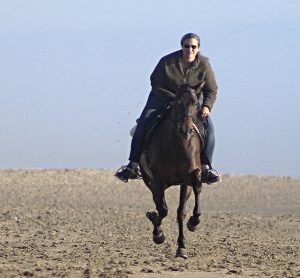 The pursuit of her own dreams has led Dr. Alonzo far beyond the walls of the Academy. In addition to her professional life as a research professor, Dr. Alonzo has taken a lead role in several equestrian pursuits. A lifelong horsewoman, she served as the elected President of the International Andalusian and Lusitano Horse Association for six years and continues to serve on the Board of Directors in the role of National Show Chair. In addition, she has played a significant role in the development and leadership of the non-profit WE United, an organization responsible for running the sport of Working Equitation in the United States. Her own horses have garnered national recognition, winning numerous National Championship titles both in the United States and Canada.
The pursuit of her own dreams has led Dr. Alonzo far beyond the walls of the Academy. In addition to her professional life as a research professor, Dr. Alonzo has taken a lead role in several equestrian pursuits. A lifelong horsewoman, she served as the elected President of the International Andalusian and Lusitano Horse Association for six years and continues to serve on the Board of Directors in the role of National Show Chair. In addition, she has played a significant role in the development and leadership of the non-profit WE United, an organization responsible for running the sport of Working Equitation in the United States. Her own horses have garnered national recognition, winning numerous National Championship titles both in the United States and Canada.
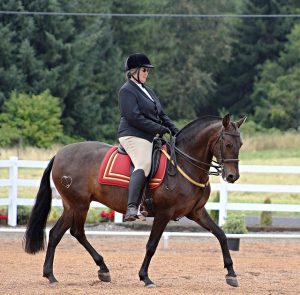 “When I earned my Ph.D. in Educational Leadership with a specialization in Learning Assessment / Systems Performance back in 2007,” she explains, “I knew the program was giving me the knowledge and skills needed to build sensitive assessments and analyze data. What I didn’t realize until a few years later was that my degree was also giving me a great foundation for serving in a variety of leadership roles. That foundation has helped me in my role as co-Director of BRT, and it has also been instrumental in giving me insights into ways in which we can help facilitate school-wide improvement efforts and support the growth and health of non-profit organizations as well.”
“When I earned my Ph.D. in Educational Leadership with a specialization in Learning Assessment / Systems Performance back in 2007,” she explains, “I knew the program was giving me the knowledge and skills needed to build sensitive assessments and analyze data. What I didn’t realize until a few years later was that my degree was also giving me a great foundation for serving in a variety of leadership roles. That foundation has helped me in my role as co-Director of BRT, and it has also been instrumental in giving me insights into ways in which we can help facilitate school-wide improvement efforts and support the growth and health of non-profit organizations as well.”
Select Publications
Alonzo, J. (2016). The relation between Smarter Balanced and easyCBM mathematics and reading assessments. Journal of School Administration Research and Development, 1, 17-35.
SmarterBalance_easyCBM_MthRdg_Alonzo
Sáez, L., Nese, J. F. T., Alonzo, J., & Tindal, G. (2016). Individual differences in kindergarten through grade 2 fluency relations. Learning and Individual Differences, 49, 100-109. FluencyDiffGrK-2_SáezNese_ETAL
Tindal, G., Nese, J. F. T., Stevens, J., & Alonzo, J. (2015). Growth on oral reading fluency measures as a function of special education and measurement sufficiency. Remedial and Special Education, 1-13. DOI: 10.1177/0741932515590234 GrowthOnORF_Measures_TindalNese_ETAL
Basaraba, D., Yovanoff, P., Alonzo, J. & Tindal. G. (2012). Examining the structure of reading comprehension: Do literal, inferential, and evaluative comprehension truly exist? Reading and Writing: An Interdisciplinary Journal. doi: 10.1007/S11145-012-9372-9 ExamStructureRdgComp_BasarabaYovanoff_ETAL
Nese, J.F.T., Park, J., Alonzo, J., & Tindal, G. (2011). Applied curriculum-based measurement as a predictor of high-stakes assessment: Implications for researchers and teachers. Elementary School Journal, 111, 608-624. AppliedCBM_Predictor_NesePark_ETAL
Alonzo, J., Basaraba, D., Tindal, G., & Carriveau, R. (2009). They read, but how well do they understand? An empirical look at the nuances of comprehension. Assessment for Effective Intervention, 35, 34-44. doi: 10.1177/1534508408330082 EmpiricalLookRdgComp_Alonzo_Basaraba_ETAL
Alonzo, J., Tindal, G., & Robinson, Q. L. (2008). Using school-wide response to intervention to close the achievement gap in reading. ERS Spectrum. 26, 1-9.
Yovanoff, P., Duesbery, L., Alonzo, J., & Tindal, G. (2005). Grade level invariance of a theoretical causal structure predicting reading comprehension with vocabulary and oral reading fluency. Educational Measurement: Issues and Practice, 4 – 12.
PredictingRdgComp_YovanoffDuesbery_ETAL
Recent Grant Funding
Project DATA for RTI (Developing Adept Teams for Advancing RTI). PI on research grant awarded by the U.S. Department of Education, Institute for Education Sciences. The purpose of this grant is to develop an online professional development (PD) program integrated within the easyCBM assessment system to provide teachers with training on key aspects of RTI, including sufficient student screening and progress measurement, developing instructionally adequate programs, and making data-based decisions for instructional change. Budget $1,499,750 from August 2016 July 2020.
Project DATA for RTI
Project Iceberg (Intensifying Cognition, Early literacy and Behavior for Exceptional Reading Growth to Improve Preschool and Kindergarten Data-Based Decision Making and Prevent Reading Disabilities. Co-PI on Stepping Up to Technology grant from the U.S. Department of Education, Office of Special Education Programs to reduce reading disability through early intervention with pre-school and kindergarten students. Budget $2,498,710 from August 2015 – July 2020. Project ICEBERG
Measuring Oral Reading Fluency: Computerized Oral Reading Evaluation (CORE). Core faculty on research grant awarded by the U. S. Department of Education, Institute for Educational Sciences. The purpose of this grant is to develop a computerized assessment system of oral reading fluency that contains an automated scoring algorithm based on a speech recognition engine and a latent variable psychometric model. Budget $1,599,289 from August 2014 – July 2018. CORE
Reliability and Validity Evidence for Progress Measures in Reading. Co-PI on research grant from U. S. Department of Education, Institute for Educational Sciences. This grant examines the technical adequacy of the easyCBM reading measures. Each year focuses on a different facet of technical adequacy and involves multi-state research studies. Budget $1,596,638 from June 2010 – June 2014.
Developing Middle School Mathematics Progress Monitoring Measures . Co-PI on research grant from U.S. Department of Education, Institute of Education Sciences. Oversaw development of multiple forms of mathematics measures aligned to the Common Core State Standards for use in grades 6-8. Budget $1,631,401 from June 2010 – June 2014.
